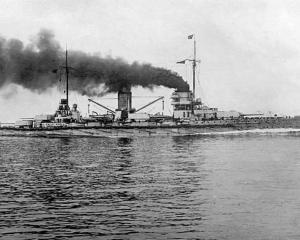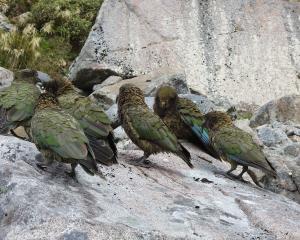
Jim Childerstone in his opinion piece (ODT 15.1.19) accuses those involved with controlling the spread of wilding conifers of having fixed views and not being willing to listen.
Well, we are listening and have been discussing the issue for several decades now. The fact that most individuals who have been involved in the discussion have concluded that the uncontrolled spread of wilding conifers is a serious threat to many important economic and cultural values does not mean we have not been listening or have fixed views.
I, for one, can hardly be accused of having a fixed view on the subject, as 35-odd years ago I wrote my master's thesis on the attitudes and opinions of high country farmers about commercial forestry, testing the hypothesis that it was cultural prejudice that stopped high country farmers from planting forests.
As it turned out, it was nothing of the sort and most high country farmers' wariness about planting commercial forests in their environment was well founded. They were mostly not convinced it would be profitable. Even then, many of them were concerned about the potential for uncontrollable spread.
If there is, as Mr Childerstone claims, significant economic benefit from wilding conifers, then it would be reasonable to ask why a major logging industry has not developed around the significant areas of wilding spread that exists today.
The fact that it hasn't is testimony to the fact that most wildings are in inaccessible sites, distant from ports, of mixed age and of poor form and/or quality. The commercially harvested trees have dealt only with a very small and most accessible proportion of the total area of wildings.
If we add in the ''adverse effects'' costs of ongoing uncontrolled spread of these wilding forests, such as from reduced water yield, loss of landscape quality, loss of biodiversity and associated extinctions and increased fire risk, then the net benefit of even planted forests in this inland zone is looking marginal at best.
The ''net benefit'' equation is hardly going to be turned in favour of letting wilding conifers spread on the basis of carbon sequestration. If that were to be the case, the public would need to be saying they are willing to sacrifice their indigenous biodiversity, their unique landscapes, their scarce water resources and all the other downsides of letting wildings go so they can avoid taking those other seemingly sensible actions of reducing carbon emission, letting marginal land revert to forest and planting forests in appropriate sites.
I think that the increasing public opinion in support of wilding control is, in fact, the result of a discussion that has been going on for several decades now and as a result of this discussion people are both more aware and better informed about the real long-term costs of doing nothing about the spread of wilding conifers.
What we are dealing with at present is a pattern of both amenity and commercial plantings in inappropriate sites, with resultant spread. That itself is a legacy of a period when there was a lack of public discussion about appropriate land uses/species and when official advice was dominated by a small group of individuals who had fixed views on the costs and benefits of a certain land use. They were foresters.
We have come to a critical juncture in deciding what path the natural evolution of our high country landscapes take. We have the choice between the vegetation being dominated by a native shrubland grassland mosaic or by conifers.
We have limited time to make this choice and the ''do nothing'' option will result in a conifer dominated landscape over 75% of most of the districts along the eastern uplands of the South Island.
Phase 1 of the National Wilding Conifer Control Programme, which has just been completed, made spectacular progress in reducing the area of spread throughout the country. That investment will have been wasted unless we follow that up by dealing with the core seed sources.
The Government will consider funding for Phase 2 early this year. I suggest that, bang for buck, investing in getting on top of wilding conifers will be one of the higher-return, lower-risk investments the Government will make.
That is because, surprisingly, wilding conifers are one of the easier weeds to control, because the seed does not last long in the ground once the seed source is removed.
-Phil Murray is the project manager with the Central Otago Wilding Control Group.












